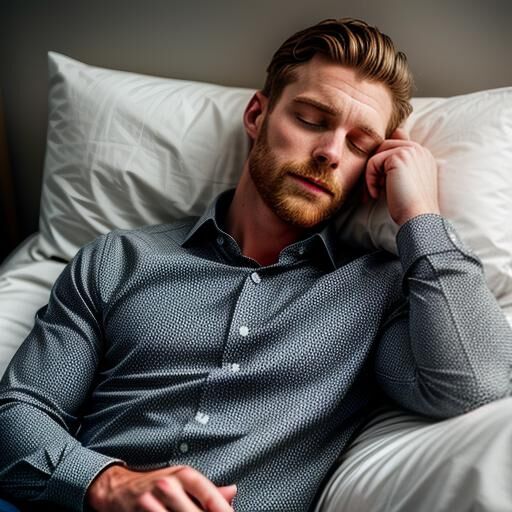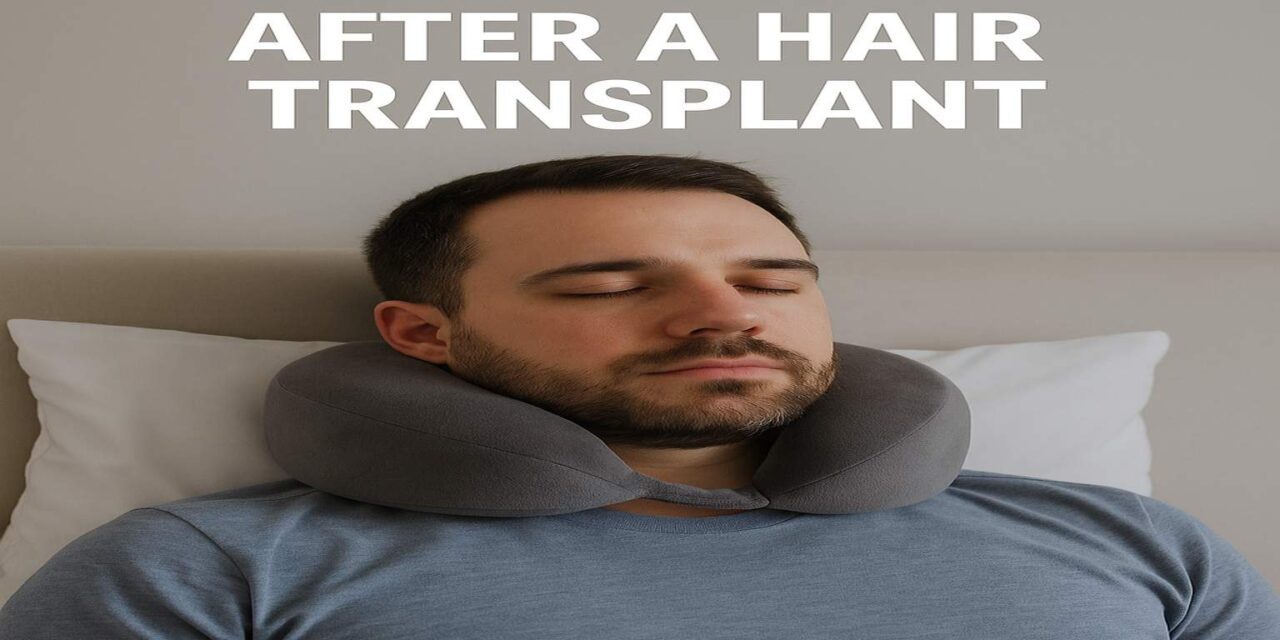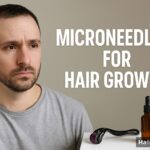We all need sleep ! But how to sleep after a hair transplant?
Sleeping after a hair transplant might sound simple, but it’s one of the most important parts of your recovery. Surgeons often recommend that patients sleep upright or at an angle—but why exactly is that? And how long should you keep it up?
In this article, we’ll break down how to sleep after a hair transplant and the best sleeping position after hair transplant. to reduce complications, and tools that can make it easier—including a recommended travel pillow that supports both your head and your grafts. Let us dive into the Best sleeping position after hair transplant.
Why Sleep Matters Post-Transplant
Immediately following a FUE hair transplant, your scalp is in a sensitive state. Tiny incisions, swelling, and inflammation are part of the healing process. Sleeping flat can cause fluid to pool around the forehead or eyes, making swelling worse and increasing discomfort. That’s why surgeons advise patients to sleep at a 30- to 45-degree angle for the first few nights after the procedure.
Maintaining the right sleeping position after a hair transplant helps reduce swelling, prevents accidental contact with the grafts, and supports quicker healing.
Recommended Sleeping Positions
Best Sleeping Aids: Supportive Pillows That Work
In order to achieve the best sleeping position after hair transplant a traditional pillow may not give you the support you need in those first crucial nights. That’s why many patients turn to orthopedic travel pillows, which cradle the head and neck while maintaining elevation.
We recommend the Proglobe Orthopedic Neck Pillow Travel Set for post-transplant sleeping.
This memory foam kit includes a contoured pillow, 3D eye mask, earplugs, and a luxury mesh bag—everything you need to create a controlled, comfortable sleeping environment and helps with Best sleeping position after hair transplant.
This travel set is ideal for keeping your head elevated without strain, especially if you’re recovering on the go or want to avoid pressure on your donor and recipient areas.

How Long Should You Sleep Upright?
Most hair restoration experts suggest sleeping at an angle for at least three nights, but some recommend up to a full week, depending on your level of swelling and sensitivity. The worst of the swelling typically peaks within 48 to 72 hours post-surgery. You’ll know you’re ready to return to normal sleeping when:
Pillow Options for Post-Transplant Comfort
Choosing the Right Pillow After Hair Transplant
Memory Foam Pillows
Memory foam pillows contour to the shape of your head and neck, providing excellent support and reducing pressure on the scalp.
Wedge Pillows
Wedge pillows keep your head elevated, which is essential for reducing swelling and promoting healing after a hair transplant.
U-Shaped Travel Pillows
These pillows offer neck support and help maintain a stable sleeping position, preventing accidental contact with the transplanted area.
Cooling Gel Pillows
Cooling gel pillows help regulate temperature and prevent sweating, which can be beneficial for scalp comfort during recovery.
Orthopedic Pillows
Designed to support the natural curve of your neck, orthopedic pillows can enhance comfort and promote proper alignment.
Feather Pillows
Feather pillows are soft and adjustable, allowing you to customize support to your preference while being gentle on the scalp.
Latex Pillows
Latex pillows provide firm support and are hypoallergenic, making them a good choice for sensitive scalps.
Buckwheat Pillows
Buckwheat pillows offer adjustable firmness and excellent airflow, keeping your head cool and supported.
At HairDaily, we found that the ProGlobe neck pillow was the most suitable and comfortable pillow to use in the weeks after a hair transplant. This will surely help you with the best sleeping position after hair transplant.
Common Questions About Sleeping After Hair Transplant
Here are answers to some of the most frequently asked questions regarding sleep and recovery following a hair transplant.
How long should I sleep with my head elevated?
It’s recommended to sleep with your head elevated for at least the first week post-surgery to minimize swelling and promote healing.
Can I sleep on my side after a hair transplant?
While it’s best to avoid side sleeping initially, you can gradually return to this position after the first week, ensuring minimal pressure on the grafts.
What should I do if I accidentally touch the transplanted area during sleep?
If you accidentally touch or rub the transplanted area, gently clean it with a saline solution and avoid further contact to prevent damage.
Is it normal to experience itching while sleeping?
Yes, mild itching is common as the scalp heals. Avoid scratching and use a recommended anti-itch spray if necessary.
When can I resume my regular sleeping position?
Most patients can return to their normal sleeping positions after two weeks, but it’s best to consult with your surgeon for personalized advice.
Should I use a special pillow after a hair transplant?
Using a supportive pillow, such as a memory foam or wedge pillow, can enhance comfort and aid in the healing process.
Bonus Tips for Sleeping After a Hair Transplant
-
Use a neck pillow or towel roll to avoid shifting during sleep
-
Sleep in a clean environment—change pillowcases daily
-
Avoid alcohol or heavy meals at night, which may increase swelling
-
Use cold compresses on the forehead (not the grafted area) to reduce puffiness
-
Minimize screen time and stress to promote better sleep qual
Conclusion
Understanding how to sleep after a hair transplant is critical to ensuring your new grafts survive—and thrive. By sleeping upright, using the right tools like the Proglobe Orthopedic Travel Pillow, and following proper recovery habits, you give your scalp the best possible environment to heal.
Your hair transplant journey doesn’t end after surgery—it continues through every night of rest. So take care of your sleep, and your new hair will thank you.











